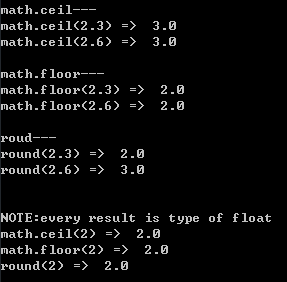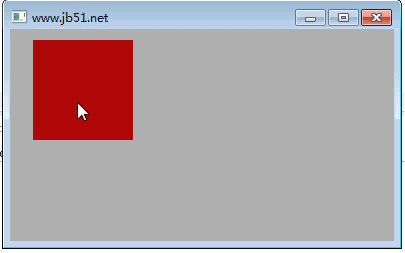详解Python3中ceil()函数用法
描述
ceil(x) 函数返回一个大于或等于 x 的的最小整数。
语法
以下是 ceil() 方法的语法:
import math math.ceil( x )
注意:ceil()是不能直接访问的,需要导入 math 模块,通过静态对象调用该方法。
参数
x -- 数值表达式。
返回值
函数返回返回一个大于或等于 x 的的最小整数。
实例
以下展示了使用 ceil() 方法的实例:
#!/usr/bin/python3
import math # 导入 math 模块
print ("math.ceil(-45.17) : ", math.ceil(-45.17))
print ("math.ceil(100.12) : ", math.ceil(100.12))
print ("math.ceil(100.72) : ", math.ceil(100.72))
print ("math.ceil(math.pi) : ", math.ceil(math.pi))
以上实例运行后输出结果为:
math.ceil(-45.17) : -45 math.ceil(100.12) : 101 math.ceil(100.72) : 101 math.ceil(math.pi) : 4
python 向上取整ceil 向下取整floor 四舍五入round
#encoding:utf-8 import math #向上取整 print "math.ceil---" print "math.ceil(2.3) => ", math.ceil(2.3) print "math.ceil(2.6) => ", math.ceil(2.6) #向下取整 print "\nmath.floor---" print "math.floor(2.3) => ", math.floor(2.3) print "math.floor(2.6) => ", math.floor(2.6) #四舍五入 print "\nround---" print "round(2.3) => ", round(2.3) print "round(2.6) => ", round(2.6) #这三个的返回结果都是浮点型 print "\n\nNOTE:every result is type of float" print "math.ceil(2) => ", math.ceil(2) print "math.floor(2) => ", math.floor(2) print "round(2) => ", round(2)
运行结果:


